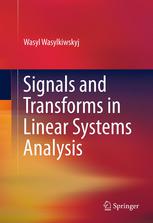

Most ebook files are in PDF format, so you can easily read them using various software such as Foxit Reader or directly on the Google Chrome browser.
Some ebook files are released by publishers in other formats such as .awz, .mobi, .epub, .fb2, etc. You may need to install specific software to read these formats on mobile/PC, such as Calibre.
Please read the tutorial at this link: https://ebookbell.com/faq
We offer FREE conversion to the popular formats you request; however, this may take some time. Therefore, right after payment, please email us, and we will try to provide the service as quickly as possible.
For some exceptional file formats or broken links (if any), please refrain from opening any disputes. Instead, email us first, and we will try to assist within a maximum of 6 hours.
EbookBell Team

4.8
24 reviewsSignals and Transforms in Linear Systems Analysis covers the subject of signals and transforms, particularly in the context of linear systems theory. Chapter 2 provides the theoretical background for the remainder of the text. Chapter 3 treats Fourier series and integrals. Particular attention is paid to convergence properties at step discontinuities. This includes the Gibbs phenomenon and its amelioration via the Fejer summation techniques. Special topics include modulation and analytic signal representation, Fourier transforms and analytic function theory, time-frequency analysis and frequency dispersion. Fundamentals of linear system theory for LTI analogue systems, with a brief account of time-varying systems, are covered in Chapter 4 . Discrete systems are covered in Chapters 6 and 7. The Laplace transform treatment in Chapter 5 relies heavily on analytic function theory as does Chapter 8 on Z -transforms. The necessary background on complex variables is provided in Appendix A.
This book is intended to serve as a text on signals and transforms for a first year one semester graduate course, primarily for electrical engineers.